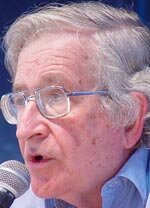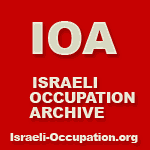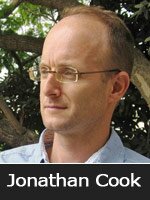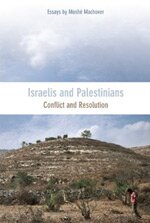By Coby Ben-Simhon, Haaretz – 26 Nov 2009
www.haaretz.com/hasen/spages/1130939.html
The 20th anniversary of B’Tselem: The Israeli Information Center for Human Rights in the Occupied Territories is a rather sad celebration. The organization that was founded during the first intifada, out of a sense that lines in the sand had been crossed and there was a need to document and expose Israel’s human-rights violations in the territories, was and remains a Mark of Cain on the brow of Israeli society.
“This organization seems to me an oasis of cleanliness in the place where we live,” says novelist Ronit Matalon, who sits on B’Tselem’s board. “For the past 20 years, tirelessly, persistently, practically against all odds – and despite the public atmosphere, the various governments through the generations and the generals – the organization has remained steadfast in delivering facts to the public, which evidently has no need to hear them. This is something that arouses great wonder in me.”
Matalon continues: “One loses all remnants of cynicism in the face of this steadfastness. The importance of an Israeli human-rights organization – not American and not European – that lives the ethical conflict, is in my opinion what makes B’Tselem what it is. I see the work that B’Tselem does as sacred, and that word is not an exaggeration. It is sacred work.”
This winter as well, after 20 years, there are not many people who would agree with the founding generation’s initial premise that human rights have no borders. A majority of Israelis seem to get by just fine with the occupation, while B’Tselem is met with suspicion and accused of treason. Despite this, over the years in which targeted assassinations, smart bombs, closures, checkpoints, detentions without due process, lack of running water, poverty and a separation fence five minutes from Kfar Sava have all become routine, B’Tselem has continued to undermine the passion for denial, and to defend the rights of Palestinians and thus also the image of Israeli society.
Here are seven of B’Tselem’s outstanding revelations and achievements:
1. October 1990 – inquiry committee to review the Temple Mount events: In October 1990, the Temple Mount Faithful group led by Gershon Salomon attempted to lay a cornerstone for the Third Temple in Jerusalem. A massive crowd of Palestinians tried to stop them, barricaded themselves in the Temple Mount compound, and stoned police officers and Jewish worshipers below, in the Western Wall plaza. Police burst onto the mount to disperse the Palestinians, using live fire and killing 17. These events prompted one of B’Tselem’s first reports.
In that report, which received widespread coverage in the media, B’Tselem claimed that police officers had opened fire on protesters indiscriminately, contrary to orders, and with the intent to kill. A number of additional investigations were launched in the wake of that report. The United Nations dispatched a team to Jerusalem, and Israel’s prime minister at the time, Yitzhak Shamir, was forced to appoint a committee of inquiry, which was headed by former Mossad chief Zvi Zamir. The Zamir Committee harshly criticized the police top brass, and concluded, “in the process of breaking through to the mount, uncontrolled use was made of live ammunition.” At the same time, however, it laid ultimate responsibility for the events at the feet of the Arab public and its leaders.
A week after the bloodbath, the police asked Ezra Kama, a Jerusalem Magistrate’s Court judge, to investigate the chain of events, as part of an inquest. The following July, Kama announced his decision not to bring to trial any of the police officers involved in the shootings.
2. March 1991 – ‘torture report’: B’Tselem’s report on the torture of Palestinians under interrogation by the Shin Bet security service, which was announced at a press conference in Jerusalem, topped the news broadcasts in Israel and reverberated around the world. The report presented new findings based on interviews with 41 Palestinians who had been interrogated by the Shin Bet at 10 detention facilities in Israel. Their testimony revealed that Shin Bet interrogators were employing methods prohibited under both international and Israeli law, including tying up detainees in painful positions for hours, sleep deprivation, covering a detainee’s head with a sack for hours at a time and the use of severe violence.
The report was viewed as the antithesis of the recommendations of the Landau Commission, headed by former Supreme Court president Moshe Landau and appointed in 1987 to set boundaries for interrogation methods. The B’Tselem report exposed the fact that torture was still being employed routinely in Shin Bet interrogations.
In September 1999, the High Court of Justice deliberated the Shin Bet’s interrogation methods, in considering a petition filed by the Public Committee Against Torture in Israel, and ruled that interrogations did indeed include illegal use of force, and constituted a criminal violation under the penal code. The verdict, drafted by the court’s then-president, Aharon Barak, altered the existing legal situation in Israel with regard to the powers granted to security forces in interrogating terror suspects. Barak ruled that Shin Bet interrogators do not have the legal authority to employ means of interrogation that deviate from the rules of “a reasonable investigation,” which the court defined as “necessarily one free of torture, free of cruel, inhuman treatment and free of any degrading conduct whatsoever.”
3. September 2002 – use of Palestinians as ‘human shields’: Starting with the second intifada, and particularly whenever the Israel Defense Forces entered densely populated Palestinian areas, such as in Operation Defensive Shield, soldiers used Palestinian civilians as “human shields”: A civilian selected at random would be forced to precede the soldiers, and to carry out dangerous tasks at their service. Among other things, IDF soldiers ordered Palestinian civilians to enter buildings to ascertain whether they were booby-trapped or to remove the tenants; to clear roads of suspicious objects; to remain inside houses that soldiers had turned into military posts, to prevent Palestinian militants from shooting at them; and to march ahead of the troops to shield them from fire, while the soldiers aimed weapons at the backs of the “shields” and on several occasions even fired over their shoulders.
In September 2002, as part of a report on Operation Defensive Shield, an offensive into the West Bank launched by the IDF the preceding spring, B’Tselem revealed that the order to use civilians as shields had come from senior military ranks. Soldiers who gave testimony to B’Tselem confirmed the existence of the policy.
B’Tselem’s revelations led that year to a High Court of Justice petition filed on behalf of several human-rights organizations, against using Palestinians as human shields. A series of additional reports and further High Court petitions on this subject resulted in a historic ruling in November 2005, which made it illegal to use Palestinian civilians as part of military missions and banned the “early warning” directive, which had allowed IDF soldiers to enlist the aid of a local Palestinian resident in operations to arrest wanted persons.
4. December 2002 – Hebron killing spree led to disbanding of Border Police company: Around 7 P.M. one evening in late December 2002, Amran Abu Hamadiya, a 17-year-old boy from Hebron, was hauled into a Border Police jeep outside the entrance to his house, a few hundred meters from the Tomb of the Patriarchs. Close to 10 P.M. that night his body was found in Hebron’s industrial zone.
B’Tselem staffers conducted an inquiry and collected testimony, in the wake of which they requested that the Justice Ministry’s department for the investigation of police officers open an investigation into the actions of the officers who had thrown Palestinians from a moving jeep, among them Abu Hamadiya. The police initially denied any connection to the incident, but B’Tselem helped locate eyewitnesses, and even obtained permission from Abu Hamadiya’s family to exhume his body to ascertain the cause of his death.
An autopsy performed at the Abu Kabir Forensic Medicine Institute in Tel Aviv ruled that the cause of death had been a direct blow to the back of the head, caused by falling backward. That finding substantiated the suspicion that Abu Hamadiya had been thrown alive out of a moving jeep, hit his head, and died. Four police officers from Company 25 of the Border Police were arrested, and eventually confessed to having set out that evening to avenge the deaths of four of their comrades in the company, who had been killed by Palestinian fire, and to throwing Abu Hamadiya from the moving jeep.
The Jerusalem District Court convicted the Border Police officers involved in the case of manslaughter and kidnapping. After the affair was exposed, Company 25 was disbanded.
5. August 2004 – “apartheid roads”: A report issued by B’Tselem revealed that Israeli soldiers were prohibiting Palestinians from using several hundred kilometers of West Bank roads. “On some of the roads there was a complete ban on any vehicle with Palestinian plates, and on some of the roads a partial ban was imposed,” says B’Tselem’s spokeswoman, Sarit Michaeli. “Palestinians knew of course that soldiers were barring them from traveling on certain roads, but until the report came out the banned roads regime had been an elusive phenomenon.”
Today several dozen kilometers of roads are still completely closed to Palestinians. The principal road that Palestinians are prevented from traveling on is Route 443, which critics have nicknamed “the apartheid road.” The High Court of Justice recently ordered the segregated Beit Awa-Negohot road to be opened to Palestinians.
6. January 2007 – the cursing settler: One morning, Yifat Alkoby approached the neighboring home of the Abu-Ayesha family in Tel Rumeida, Hebron. She pushed her nose up against the wire mesh covering the open window and began cursing obscenely: “Sharmuta [whore, in Arabic] – you and all your daughters, sharmuta, close that door, sit inside this cage. Sharmuta!”
The settler was videotaped by Rajaa Abu-Ayesha, 16. It was the first success of the “armed with cameras” project, in which B’Tselem distributed more than 100 camcorders to Palestinians in areas prone to conflict.
The camera also caught on tape an Israeli soldier standing by idly as Alkoby shouted her abuse, and the government decided to appoint a ministerial committee to tackle law enforcement in Hebron. The committee, made up of then-foreign minister Tzipi Livni, public security minister Avi Dichter, and finance minister Roni Bar-On, was headed by the defense minister, Amir Peretz. “Throughout the world this comes across as an incident under the auspices of the government, and I do not intend to allow these phenomena to continue,” Peretz said.
7. July 2009 – Armored Corps battalion officer relieved of command: On July 7 of this year, during a demonstration against the separation fence in the West Bank village of Nil’in, soldiers detained one of the protesters, Ashraf Abu Rahma, 27. The soldiers kept him for about half an hour, handcuffed and blindfolded. A woman from the village, equipped with a camcorder from B’Tselem, filmed a soldier shooting a rubber bullet at Abu Rahma’s leg from close range, in the presence of Lt. Col. Omri Borberg, the shooter’s battalion commander, who was holding Abu Rahma’s arm at the time.
The broadcast of the video footage compelled the military advocate general, Brig. Gen. Avichai Mandelblit, to order the Military Police that very evening to launch an investigation, and also to arrest the shooter. It emerged that the battalion commander had asked the soldier, in Abu Rahma’s presence, in Hebrew, “What do you say, shall we take him aside and ‘shoot rubber’ at him?” The soldier understood this to be his superior officer’s intention, whereas the battalion commander claimed that his intention was merely to frighten the detainee. The Military Prosecutor’s Office decided to bring both the battalion commander and the soldier up on disciplinary charges of conduct unbecoming.
Abu Rahma petitioned the High Court of Justice against the military advocate general, with the help of four Israeli human-rights organizations, including B’Tselem. The petitioners demanded that the indictments against Borberg and the soldier be amended to reflect “the severity of the actions.” The Supreme Court justices unanimously accepted the petition, and ordered the prosecution to make the charge sheets more harsh.
In August the IDF chief of staff, Gabi Ashkenazi, approved Borberg’s resignation as commander of Battalion 71 of the Armored Corps. The evidentiary phase in the pair’s trial is slated to begin soon.

























